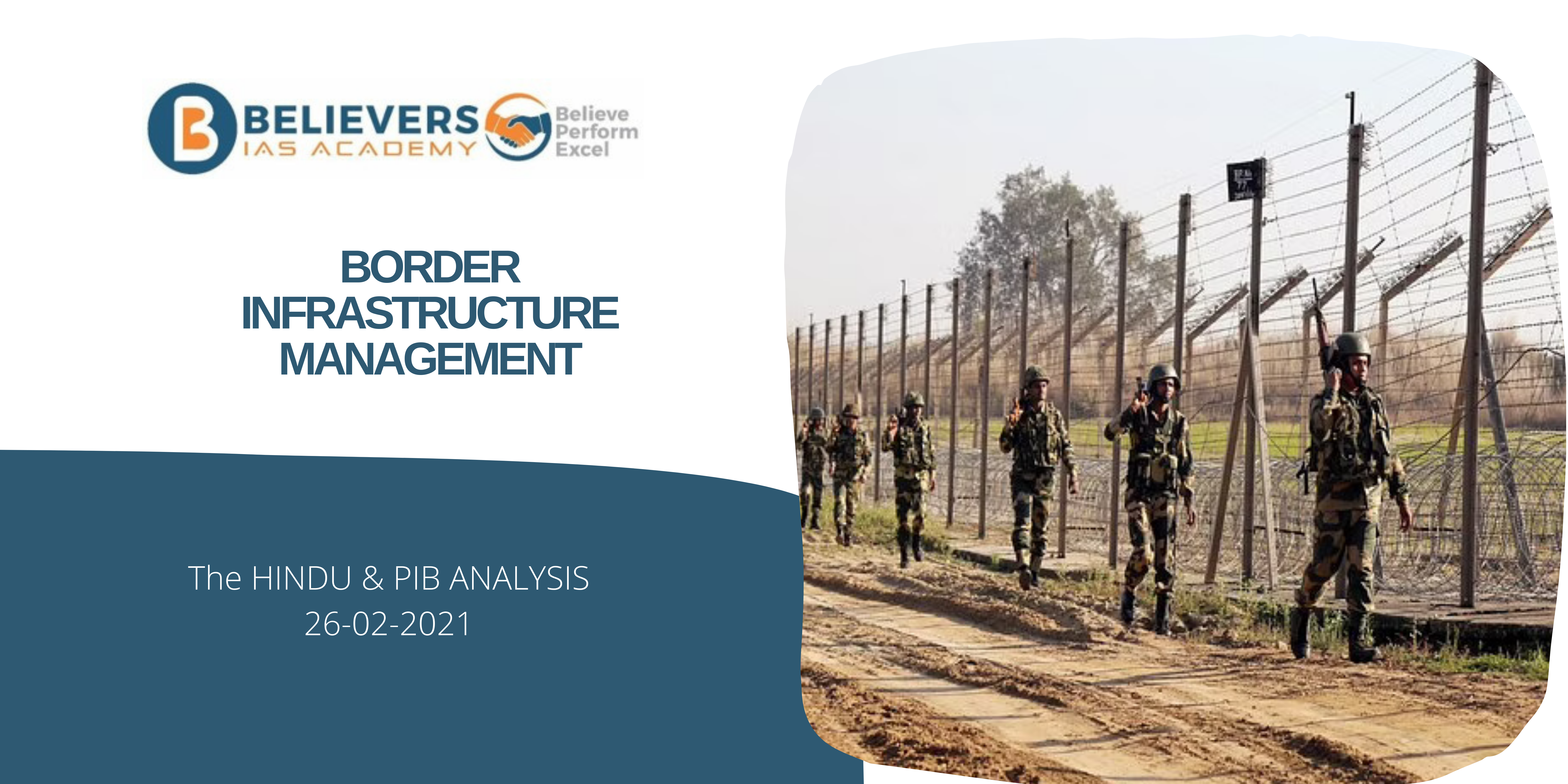Border Infrastructure Management
Why in News?
- Recently, the Ministry of Home Affairs has approved the continuation of the Central Umbrella Scheme of “Border Infrastructure and Management” (BIM) over the 15th Finance Commission Cycle from 2021-22 to 2025-26, at a cost of Rs.13,020 crore.
What does BIM Envisage?
- The BIM scheme will help in the creation of infrastructure such as border fence, border flood lights, technological solutions, border roads and Border Out Posts (BOPs) and company operating bases to secure India’s borders with Pakistan, Bangladesh, China, Nepal, Bhutan and Myanmar.
- It will strengthen the border infrastructure for improving border management, policing and guarding the borders.
- India’s border with Pakistan is 3,323 km long, including about 775 km of the LoC The length of the border is 4,096 km with Bangladesh, 3,488 km with China, 1,751 km with Nepal, 699 km with Bhutan, 1,643 km with Myanmar.
Vibrant Village Programme
- Border villages with sparse population, limited connectivity and infrastructure often get left out from the development gains. Such villages on the northern border will be covered under the new Vibrant Villages Programme, announced in the Budget 2022-23
- The activities will include construction of village infrastructure, housing, tourist centers, road connectivity, provisioning of decentralized renewable energy, direct to home access for Doordarshan and educational channels, and support for livelihood generation.
- The move has been taken to counter the Chinese ‘model villages’ close to the LAC
- It will be an improved version of the existing border area development programme.
BADP
- BADP was initiated in the border areas of the western region during the Seventh Five Year Plan (1985-90), for ensuring balanced development of border areas through development of infrastructure and promotion of a sense of security among the border population.
- The programme aims to meet the special development needs of the people living in remote and inaccessible areas situated near the international border and to saturate the border areas with the essential infrastructure through convergence of Central/State/BADP/Local schemes and participatory approach.
Source: THE HINDU.




